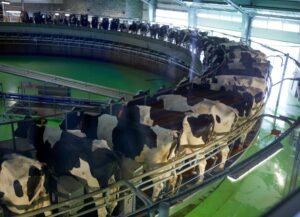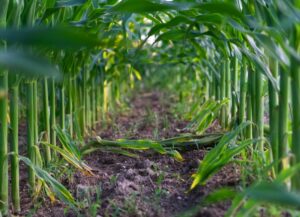Alvaro Garcia
Two of the main stressors for cows are regrouping and their competition for resources such as bunk space. Cow competition for feeding space at the bunk during the transition period is associated with pre-established hierarchies within the herd. Older and more experienced cows usually exert dominance over their younger herd-mates.
Some authors contend that increased feeding synchrony is associated with reduced competitiveness and cow well-being, particularly in submissive cows. Dominance is also related to the cow’s body mass and health status since part of it is associated to the intensity with which they can shove around their competition. These agonistic interactions are a source of stress that could result in either developing health problems or even worsen the ones that could already be present.
The question is then how cows ponder their need for nutrients vs. the risk of engaging in competitive agonistic behavior. Are cows feeling strong enough to compete at peak feeding time, or do they wait until there is less competition and thus reduce the risk of agonistic interactions?
Could cow’s behavioural changes help us to predict diseases?
Eating what has been left by dominant cows can result worsen health problems for submissive cows if the first group happens to sort feed. Another question is if these strategies depend on the health status of the cow and if they are consistent over time. Furthermore, could these behavioral changes help detect what kind of ailment is currently affecting submissive cows?
A recent study (Foris et al., 2020) attempted to characterize social competition strategies in transition cows, and how these varied depending on their health status. The authors followed cows during 3 periods:
- Pre-calving (days −6 to −1)
- Post-calving (days 1 to 3)
- Post-calving (days 4 to 6)
Cows in this study were those that had shown behavioral changes before metritis diagnosis, the effects of non-steroidal anti-inflammatory drug treatments, and the association between metritis and behavior in their individual stalls. Pre-and post-calving cows were housed in pens with lying stalls, then moved to the pre-calving pen 3 weeks before calving. When they showed signs of calving, they were moved to the maternity pen (2 cows at one time).
Cows transferred to the healthy group were those without any clinical health disorder, no subclinical ketosis, and not more than 1 day of fever on days 1-6 post-calving. Cows that were diagnosed with metritis on day 6 post-calving were paired with healthy cows and stayed in the post-calving group for 3 weeks.
Agonistic behavior (i.e. replaced at the feed bunk) and feeding synchrony were determined using an algorithm based on electronic data at the bunk and used to calculate competition strategies. Both pre- and post-calving cows were fed TMR and milked twice daily. Cow health was monitored for 21 d post-calving and screened for metritis (vaginal discharge) every 3 days.
Changes in cow’s competition strategies suggest they are suffering metritis
The results showed two apparent and consistent strategies, defined by asynchrony and competitiveness that explained 82% of the variance. There were no differences in strategies when comparing healthy cows and those with metritis. The latter however, tended to change more their strategy between pre-calving and post-calving 1-3 days, and between this one and post-calving 4-6 days.
This experiment showed that cows have individual variation in competition strategies, and if these variations can be detected automatically it may help detect metritis. Automated measures of agonistic behavior and feeding synchrony can be useful to identify consistent competition strategies, as defined by different levels of asynchrony and competitiveness.
These findings may help develop precision farming technologies to measure strategy change, and likely facilitating the early detection of metritis.
Reference:
Foris, B., von Keyserlingk, M.A., Weary, D.M. 2020. Competition Strategies of Metritic and Healthy Transition Cows. Animals. 10(5): 854.
© 2020 Dairy Knowledge Center. All Rights Reserved.











